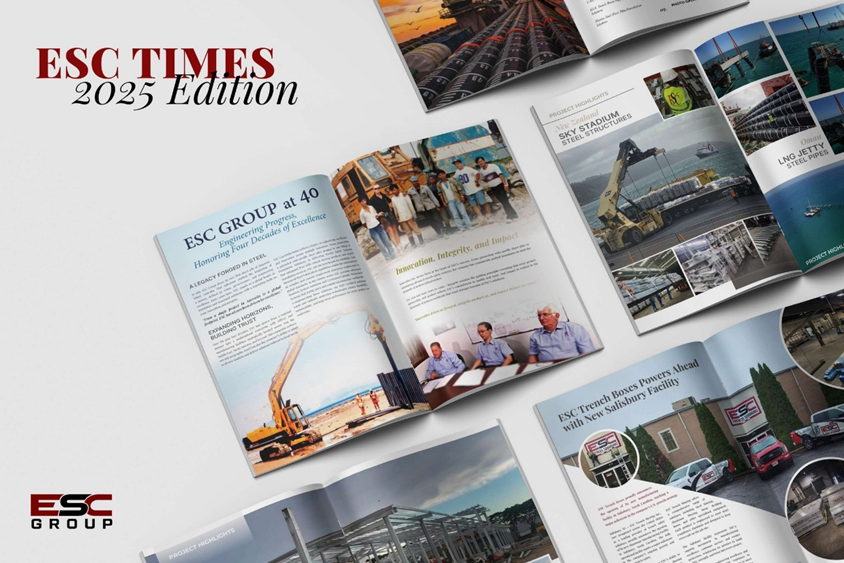Utilizing ESC Trench Boxes for OSHA Guideline Adherence
- Nov 11, 2023
- 4 min read
Updated: Apr 14, 2024
Excavations, trenching, and shoring is fundamental in construction for several reasons. Primarily for creation of stable foundations for buildings, roads, and infrastructure, ensuring structural stability. They enable land clearing, leveling, and shaping, making the ground suitable for construction and other development activities. This also provides access for laying utility lines, such as pipes and cables, crucial for water, electricity, and other services, as well as soil analysis, essential for understanding the soil's properties and potential impacts on construction projects.
Excavations, though crucial, carry various risks, emphasizing the necessity for robust safety protocols. Recognizing potential accident factors is key to devising preventive solutions.
The primary cause of cave-ins is unstable soil, especially in areas with loose or water-saturated earth. Soil erosion, geological faults, or inadequate compaction contribute to the instability. External forces can be a factor too, such as vibrations from nearby heavy machinery that weaken the integrity of a construction site. Cave-in risks can also be due to water infiltration in the excavation because of rain or groundwater seepage that softens soil, diminishing its load-bearing capacity. It is also important not to neglect routine inspections and maintain excavation support systems. Scheduling routine evaluations and upkeep is crucial for maintaining structural stability and averting cave-ins.
OSHA is a federal agency under the United States Department of Labor. The agency aims to guarantee workplace safety through the creation and enforcement of rules and standards, carrying out inspections, and providing guidance to ensure employers adhere to established protocols, thus preventing workplace accidents.
Tenches 5 feet (1.5 meters) deep or greater require a protective system unless the excavation is made entirely in stable rock.
Trenches 20 feet (6.1 meters) deep or greater require that the protective system be designed by a registered professional engineer or be based on tabulated data prepared and/or approved by a registered professional engineer in accordance with 1926.652(b) and (c).
Employers have a competent person to inspect trenches daily and as conditions change ensure elimination of excavation hazards.
Workers have the right to working conditions that do not pose a risk of serious harm.
Inspect trenches at the start of each shift.
Inspect trenches following a rainstorm, other water intrusion and after any occurrence that could have changed conditions in the trench.
Protective Systems – Benching, Sloping, Shoring and Shielding
For more information about OSHA trench work guidelines click here: Trenching and Excavation Safety by OSHA
Highlighting the critical need for comprehensive safety measures and adherence to OSHA guidelines – ESC has fully developed its Trench Boxes Series (also known as Trench Shields) a two-sided, high-quality, and economical excavation support system that provides a safe working environment in trenches up to 5.6m deep.
One of the main advantages of a trench box is that it makes a trench more stable and durable. A properly installed and positioned shield allows workers to better control the safety of a trench. When a shield is not in use, trenches can collapse instantly. A trench box can help keep a trench safe and stable for several months, provided the weather conditions, soil type, and depth of the trench are suitable. A trench box is therefore ideal for quick-phased and long-term construction projects.
Designed & manufactured in accordance with OSHA 29 CFR 1926.650, 29 CFR 1926.651 and CFR 1926.652, Subpart P, Excavations.
3rd party product certificates are available for all products.
Heavy-duty robust design.
Flatpack delivery.
Fixed or adjustable spreaders are available in any required length.
Custom box sizes are available.
Follow NAXSA - Approved shoring shield Tab Data Sheet.
All TSB series panels are fully welded for maximum strength. No stitch welds or spot welds were used.
3/4" standard push pads.
Reinforced knife-edge supplied as standard on 8ft and 10ft height shields. 4ft and 6ft shields supplied with flat bottoms as standard. Knife-edge and flat bottom interchangeable on request
The success and safety of construction projects heavily rely on well-planned and regulated construction excavations, trenching, and shoring. This necessitates meticulous planning, strict adherence to safety protocols, and consistent inspections to guarantee the safety of workers and the overall success of the construction endeavors.
Keep the Workers Safe
ESC Trench Boxes provide a protective barrier around the excavation, thereby minimizing the risk of accidents and injuries due to soil shifting or unexpected trench wall collapse. They stabilize the trench walls, ensuring a safer working environment for personnel operating within the trench. Additionally, trench boxes aid in maintaining the reliability of the excavation site, reducing the likelihood of soil or rock falling onto workers, ultimately increasing overall safety in trenching and excavation operations.
Utilizing trench boxes is crucial for complying with Occupational Safety and Health Administration (OSHA) guidelines in construction and excavation work. These shields serve as protective systems that help prevent trench collapse and safeguard workers.
OSHA mandates the use of protective systems for trenches deeper than five feet, and ESC trench boxes are among the options to meet these safety requirements. They create a secure environment by supporting trench walls, mitigating the risk of cave-ins and associated injuries, aligning with OSHA standards for excavation safety.
By employing trench boxes, workers are provided with a safer working environment and employers adhere to OSHA's regulations, ensuring the well-being of their workforce during excavation and trenching activities.
















